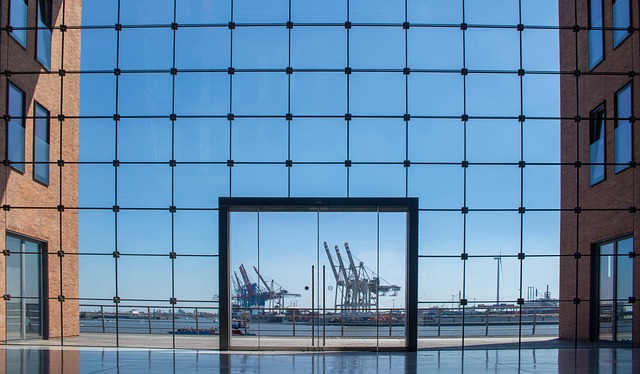The relationship between real estate and logistics is crucial for both developers and businesses. E-commerce giants require urban distribution centers for swift delivery, driving demand for specific property types. Efficient logistics can boost property values through modern infrastructure that attracts businesses, increasing rental yields and local property value. Understanding this dynamic is vital for strategic planning: developers can create mixed-use projects to support economies, while businesses align logistical strategies with real estate decisions for optimized supply chains. This steady demand mitigates market volatility, ensuring high demand for storage, distribution, and transportation spaces even during downturns. To capitalize on this growing demand, developers should focus on locations with robust infrastructure and proximity to distribution centers, investing in flexible designs and smart inventory management technologies for enhanced property value and appeal.
In today’s dynamic market, understanding the intricate link between real estate and logistic needs is paramount. As businesses seek efficient supply chain solutions, steady demand for strategic locations continues to drive property markets. This article explores this symbiotic relationship in depth. We analyze how logistic requirements impact real estate values, dissecting trends that benefit developers and investors. By examining these factors, readers will gain valuable insights into capitalizing on the ever-steady demand within the real estate sector.
Understanding the Link Between Real Estate and Logistic Needs

The link between real estate and logistic needs is a crucial aspect often overlooked in the industry. As businesses evolve, their logistical requirements become increasingly complex, directly impacting the type and location of properties they seek. For instance, e-commerce giants require vast distribution centers close to urban hubs to ensure swift delivery, driving demand for specific real estate types. Conversely, efficient logistics can enhance a property’s value; well-connected industrial spaces with modern infrastructure attract businesses, increasing rental yields and property values in those areas.
Understanding this symbiotic relationship is essential for both developers and businesses. Developers can strategically plan mixed-use projects that cater to logistical needs, creating sustainable hubs that support local economies. Similarly, businesses can leverage their logistical strategies to inform real estate decisions, ensuring they secure the right locations to optimize supply chains and meet market demands.
The Impact of Steady Demand on Property Markets

Steady demand, driven by logistic needs, has a profound impact on real estate markets. This consistent requirement for space to facilitate storage, distribution, and transportation creates a stabilizing force that can mitigate some of the volatility often seen in property sectors. As businesses seek reliable locations to base their operations, steady demand ensures that prime real estate remains sought-after, even during economic downturns.
This stability translates into opportunities for both investors and developers. Investors can secure long-term returns with reduced risk, while developers are encouraged to construct facilities tailored to logistics needs, such as warehouses and distribution centers. The result is a vibrant and diverse property landscape that caters to the evolving demands of modern commerce.
Strategies for Developers and Investors to Capitalize on This Trend

To capitalize on the steady demand driven by logistic needs, developers and investors should strategically align their real estate projects. This involves identifying locations with robust transportation infrastructure and proximity to distribution centers, which are key enablers for efficient logistics operations. By focusing on these areas, developers can ensure consistent tenant interest from e-commerce, warehousing, and last-mile delivery companies.
Investors should also consider the long-term outlook of the e-commerce industry’s growth, as it continues to reshape global supply chains. Investing in flexible, modular real estate designs that accommodate evolving logistics requirements can be lucrative. Additionally, partnering with established logistics providers or integrating smart inventory management technologies within developments can further enhance the value and appeal of these properties, solidifying investor returns.






